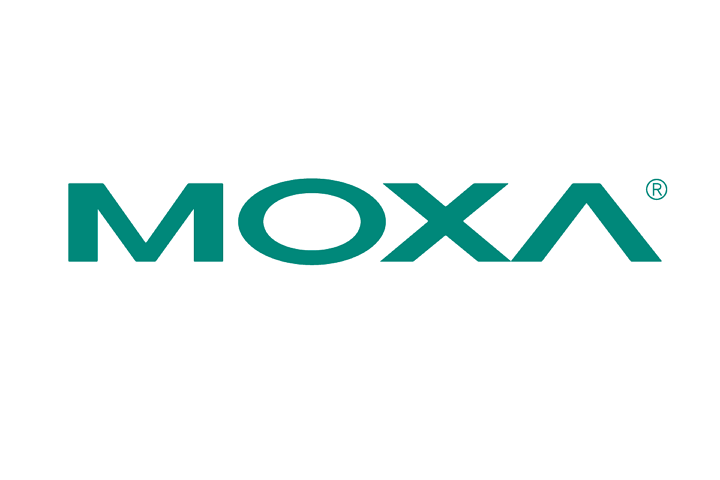Regardless of whether you mention it as “the Industrial Internet,” “the Industrial Internet of Things,” or “Industry 4.0,” the fundamental principles remain consistent. The industrial Internet signifies an evolution and consolidation of technology that provides interconnectivity between businesses, devices, and individuals over the Internet. Today, the realms of automation and IT are amalgamating their progressions from the previous two decades to address significant global issues in energy, public transportation, urban infrastructure, and manufacturing. Notably, the factory environment is widely acknowledged as an initial frontier for exploration and implementation of the industrial internet. The task of enabling concepts like edge connectivity, protocol conversion, and edge computing to be widely accepted and implemented on the factory floor is undeniably challenging. Presently, there exist four steps for IoT enablement that assist plant operation managers in addressing the complexities of device interconnection and fostering smarter factories.

Steps to Enable IoT:
Setting Objectives: Defining your operational target marks the initial phase towards seeking a resolution. Nevertheless, articulating an operational objective explicitly can be a challenging task. There is often a tendency to adhere to existing norms or predetermined courses of action when outlining an operational goal. This approach may inadvertently overlook superior, more scalable connectivity solutions before they are even considered. We propose that communicating your operational goal to a vendor or system integrator be as straightforward as possible so that technical discussions on connectivity and network architecture commence from a fundamental level. Utilize a methodical approach to express your goal in clear, operational terms by initially identifying the pain points. Then, progressively detail the requirements essential to overcome the operational challenges at each stage of your production process. The initial two of the four IIoT connectivity enablement processes, situated within the identification phase of upgrading or designing an intelligent factory, are delineated below.
Phase 1: Evaluate Your Operation’s Bottlenecks
Pinpoint the hurdles and deficiencies within your operations. These may stem from environmental or technical factors, or they may be demands for process enhancements mandated by top-level management. Operational challenges may vary widely in specificity or breadth. They could range from something as precise as modernizing a legacy segment of your operations to Ethernet connectivity or as expansive as reducing overall manufacturing costs by 10% across the organization within the next five years. In each scenario, laying out the impediments and challenges upfront significantly benefits your connectivity provider.
For instance:
A production manager at a machinery manufacturing firm implemented a company-wide Computer Integrated Manufacturing (CIM) system several years ago. Subsequently, the company was acquired, necessitating the integration of the current procedures into the acquiring entity’s operations, which involves the Manufacturing Execution System (MES) and operational control standards. The existing CIM infrastructure fails to meet the current requisites, leading to a decline in performance.
Complete replacement of the entire CIM infrastructure is not a viable option. However, enhancements are imperative to streamline operations and align with the operational processes of the acquiring organization on a company-wide scale. The production manager requires a retrofit solution offering intelligent I/O condition monitoring to optimize the existing CIM system and interface with the new MES.
Phase 2: Formulate and Rank Operational Objectives
Construct operational objectives around your impediments and prioritize them according to significance. The aim is to differentiate between mission-critical solution enhancements and those merely perceived as advantageous. Additionally, prioritizing operational objectives enables you, the integrator, and the supplier to opt for the most scalable solution for an intelligent factory. This approach guarantees that operational objectives are achieved upon project completion, and it accounts for long-term operational and maintenance expenses in case of future scalability requirements.

For example:
An operational supervisor at a beverage manufacturing firm must reduce labor expenditures this fiscal year while seamlessly integrating all existing bottling lines with the new MES system to facilitate enhanced control and visibility at both operational and executive levels. Following an analysis that identified insufficient visibility and control in the plant’s production lines as the principal concern, the supervisor concluded that the top priority should be attaining complete real-time visibility of all sensors on lines 1-8 on the MES dashboard. This assessment would enable an audit of sensors and protocols to explore available technologies and solutions for linking different sensors and actuators to the SCADA system, and the integration of sensors and SCADA with MES. Consequently, a network scrutiny is indispensable and should be conducted alongside a distributor, system integrator, or system provider.
Phase 3: Evaluate the Interoperability Status of Vital Processes
The pivotal consideration and hurdle in establishing an interconnected intelligent factory is managing the various automation protocols. Depending on the operational context, you may encounter multiple proprietary fieldbus automation protocols that require integration to fulfill your operational objectives. Collaborate with internal experts and integration teams to document and categorize all devices, endpoints, and apparatuses within your solution domain, along with their corresponding protocols, physical interfaces, installation sites, and operational functions. Include any pertinent restrictions or specifics concerning the technology, device, or equipment that might be crucial for a network supplier or system integrator to grasp.
Network Evaluation:
Once the operational bottlenecks and objectives are clearly defined and communicated to all relevant stakeholders, an interconnectivity strategy can be devised. Over the past three decades, Moxa has steered companies from ambitious operational objectives to actual implementation by leveraging our proficiency as a connectivity and networking IoT solutions provider. We develop bespoke solutions tailored to each client that align with all the aspects detailed below.

To access this evaluation tool, download the tool here.
By way of illustration:
An operations overseer is tasked with integrating all motion and positioning sensors and systems within an expansive automotive production facility into the plant’s existing Supervisory Control and Data Acquisition (SCADA) system, while implementing an edge computing framework for real-time analytics on various equipment statuses. Numerous production stages in this process currently operate on isolated networks that necessitate integration for seamless operations. Although the present MES can accommodate enterprise-wide connectivity, existing solutions for system diagnostics and production analytics on this magnitude are yet to be available. The operations overseer must verify that
He is adept at not just aiding and merging outdated I/O machinery, but also figuring out the optimal approach to incorporate edge intelligence in crucial sectors across the manufacturing process. Substantial enhancements in bandwidth availability and network redundancy will also be essential to accommodate the increased volume of data being transmitted from sensors to the MES. Furthermore, redundancy and an industrial routing firewall plan will be necessary to be integrated into the upcoming solution to uphold process compartmentalization and security. In order to achieve this, the operations manager needs to document all capital assets, sensors, and devices, as well as their respective protocols, and organize them based on their role in the workflow process. Starting from NC Machining to Part Quality Inspection, the operations manager identifies all the key elements that must be encompassed in the new interconnected solution, along with their associated protocols and physical interfaces.
Moxa provides several distinctive resources to facilitate the operations manager in excelling at overseeing plant modernization and implementing IoT solutions in existing and new sites. Access our network audit worksheet to delve deeper.
Step 4: Opt for the Correct Devices to Assist You Establish Connectivity
Assess Operational Advantages: Evaluating the viability of any investment can pose a challenge, particularly when explaining it to high-level management in a large corporation when your area of expertise focuses on a specific manufacturing operation that forms just a small segment of a much broader business. Identifying potential hidden expenses and savings from an investment in a connected, intelligent factory necessitates not only recognizing evident costs and savings but also forecasting operational expenses and savings. By meticulously formulating savings predictions and outlining a repayment schedule for the initial investment, a comprehensive operational proposal can be developed.
As an illustration:
An executive in a medium-sized semiconductor manufacturing plant has meticulously documented all devices in the current process flow by entering the device details like name, location, protocol, physical interface, and plant location in the Moxa Network Audit Worksheet. Additionally, the executive has taken an additional step by providing internally developed drawings and plans. With the manufacturing facility’s challenges and operational objectives already outlined, the executive can choose from various connectivity solutions offering varying bandwidth, edge computing capabilities, and redundancy levels. Now equipped with the awareness that multiple solutions are available offering different advantages, the executive can explore the optimal solution for the business requirements while focusing on achieving the highest return on investment by reducing downtime, labor expenses, total cost of ownership, and maximizing output.
With three decades of experience delivering connectivity and networking solutions to the automation industry, Moxa possesses a unique insight into the diverse factors that render an investment in a smart factory feasible and pragmatic. While engaging in an internal corporate process is likely and recommended, Moxa provides a toolkit that can be tailored and implemented across a wide spectrum of scenarios and industrial automation domains. We believe this will ensure that you thoroughly evaluate any technical or financial considerations when presenting an investment case to internal stakeholders. The payback calculator can guide you in:
- Estimating the cost of downtime
- Projecting yearly savings from your IIoT investment
- Calculating the payback timeframe for your IIoT investment
Explore our website for more insights on our smart factory solutions.
- Not Only for Automobiles: Discovering CANbus Technology in Various Industrial Settings - October 29, 2024
- Boost Your Network Performance: An Exciting Manual to PoE Switches! - September 10, 2024
- Understanding Gigabit Switches: Industrial vs Regular Gigabit - September 4, 2024


